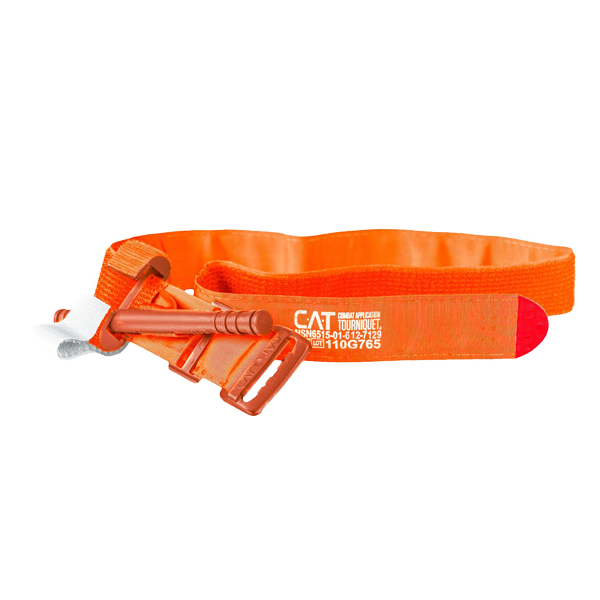CAT Tourniquet Orange
CAT Tourniquet Orange
The Combat Application Tourniquet (CAT) is a tourniquet (one-handed tourniquet) that can completely stop life-threatening arterial bleeding in protruding body parts such as arms and legs.
The Combat Application Tourniquet (CAT) Generation 7 is a small and lightweight one-handed tourniquet that can completely stop life-threatening arterial bleeding in the arms and legs.
The blue CAT Tourniquet is specially designed to be used only for practice/training, but it has the same function and principle as the black and orange ones.
The tourniquet has an adhesive tape and an adjustable friction buckle that allows it to fit a wide range of circumferences. The tensioning arm, which is easily operated with one hand, uses a free internal band to provide greater and more extensive pressure on the area of interest. The tensioning arm is then locked in place (still with one hand) with a built-in hook. To further secure the tensioning arm during transport, a Velcro strap is used that locks over the hooks.
Life-threatening bleeding
For life-threatening bleeding, tourniquets are used as a first-line treatment. New evidence shows the importance of rapid control of bleeding and that tourniquets do not lead to the side effects that have traditionally been believed.
Life-threatening external bleeding should be treated first in the AE management and many concept courses have moved to CAE. The capital C means control of life-threatening external bleeding first in the management.
New findings from the conflicts in Afghanistan and Iraq have shown that life-threatening bleeding must be prioritized first in AE care. By aggressively treating life-threatening external bleeding first, the risk of the trauma patient ending up in a negative spiral and entering the fatal triad (hypothermia-acidosis-coagulopathy) is reduced.
The tourniquet should be used as a temporary measure to transport the patient to surgery and to reduce the risk of the patient ending up in the deadly triad.
In life-threatening bleeding where it is difficult to use tourniquets due to anatomy, pressure/packaging is recommended as a first-line measure. The packing can advantageously consist of hemostatic dressings, as these contain substances intended to stop bleeding more quickly.
Couldn't load pickup availability




